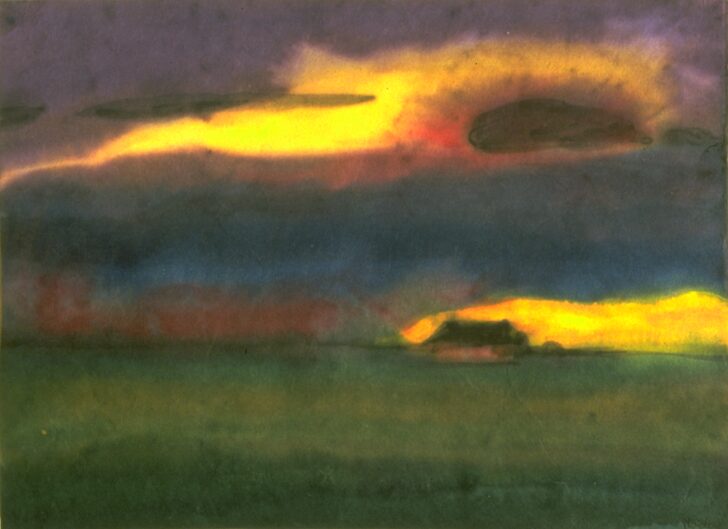Frisian Landscape
Emil Nolde

Description
Emil Nolde was one of the most important German Expressionists, a group of early twentieth-century artists who sought free and personal ways to convey their feelings. His primary vehicle of expression was color, and he reinvigorated the watercolor medium in this century. Nolde typically used a wet-on-wet technique, applying watercolor to dampened paper, so that the pigments spread into the paper. In some cases, as in the Frisian Landscape, the artist applied the medium to both front and back of the paper, so that the color bled through to the front, creating effects of great depth and translucency.
Nolde produced thousands of watercolors during his career, most of them created after 1920. They were executed rapidly and are marked by bold, fluid forms and intense, vibrant color. Nolde prized spontaneity and exploited accidental effects in his work. By having his forms flow to the edge of the sheet, as in this drawing of the marshland of North Friesland, in Northern Germany, the image seems to extend beyond those limits, thus giving a sense of the infinite.
Sean M. Ulmer, University Curator of Modern and Contemporary Art, for "A Matter of Degree: Abstraction in Twentieth-Century Art," November 10, 2001 - January 27, 2002
Usage Rights:
If you are interested in using an image for a publication, please visit https://umma.umich.edu/request-image/ for more information and to fill out the online Image Rights and Reproductions Request Form.